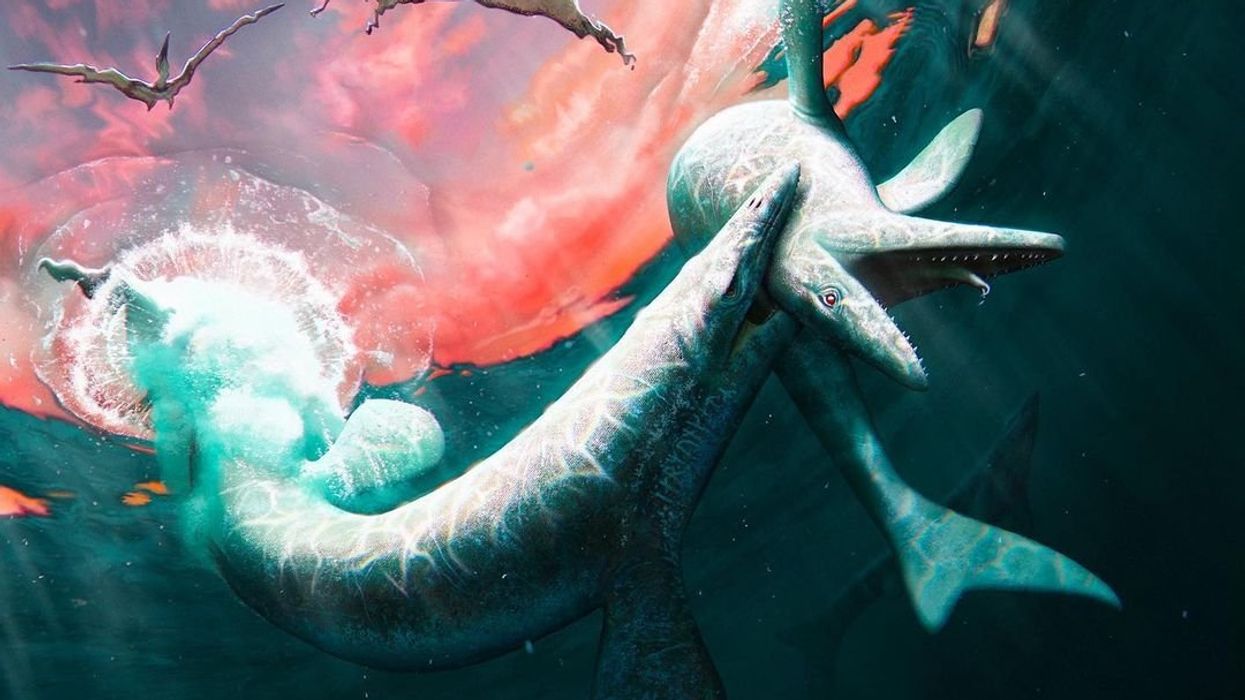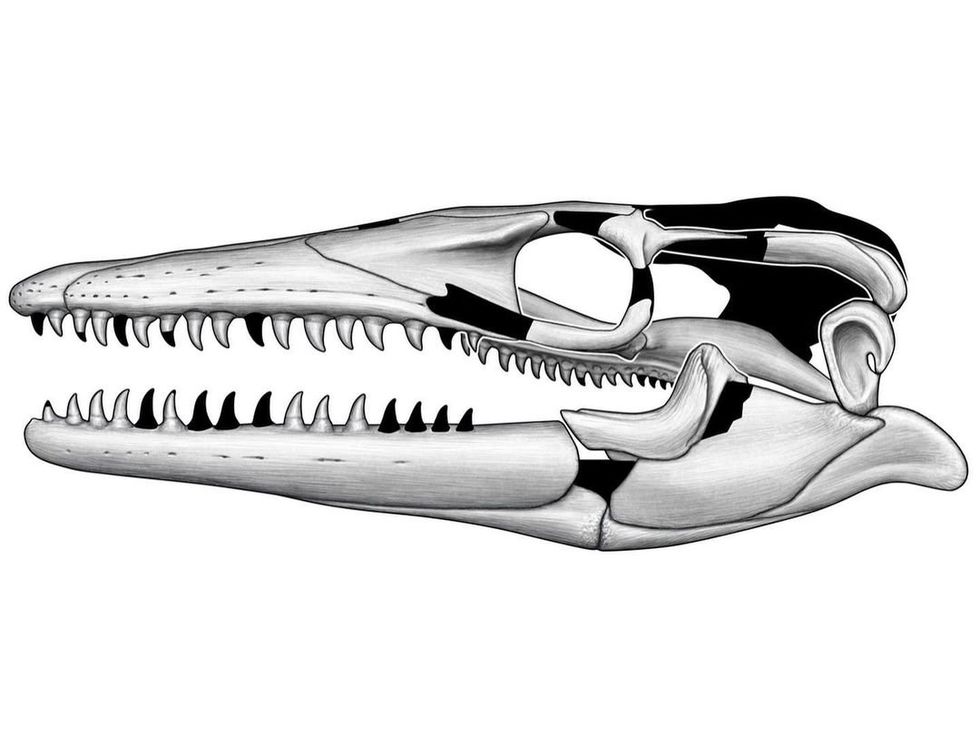Freya Coombs
Nov 03, 2023

Jam Press/Henry Sharpe
A 24-foot-long sea monster species has been discovered by scientists.
It is a new type of mosasaur, an extinct large, carnivorous aquatic lizard.
The new discovery has been named Jormungander Walhallaensi, after a sea serpent from Norse mythology.
Believed to have lived during the late Cretaceous period, between 145.5 and 65.5 million years ago, the creature has been described as having “transitional” traits between two other well-known mosasaur species.
The incredible study is based on a fossil discovered in 2015, in Walhalla, North Dakota, US, with researchers taking over eight years to identify the species.
The skeleton was found in an impressive condition, with nearly all the skull, jaws and spine intact, along with a large number of vertebrae.
Following extensive analysis and surface scanning a team of researchers has finally confirmed that this is indeed a new species.

The aquatic creature forms a link between the Clidastes species, a smaller mosasaur, and the Mosasaurus, a larger species that grew to nearly 50 feet long.
Examining the specimen, it is estimated to measure approximately 24 feet long, with the addition of flippers, a shark-like tail and “angry eyebrows” caused by ridges on the skull.
Mosasaurs are believed to have lived between 100 and 66 million years ago, becoming extinct during the asteroid strike that killed the dinosaurs.
Evolving flippers and becoming aquatic, the species is more closely related to lizards or snakes than dinosaurs.
“If you put flippers on a Komodo dragon and made it really big, that’s basically what it would have looked like,” said Amelia Zietlow, lead author of the study and PhD student in comparative biology at the American Museum of Natural History’s Richard Gilder Graduate School.
Research suggests the Jormungandr existed before the Mosasaurus, dating back 80 million years.
“This fossil is coming from a geologic time in the United States that we don’t really understand,” said co-author Clint Boyd, from the North Dakota Geological Survey.
“The more we can fill in the geographic and temporal timeline, the better we can understand these creatures.”
Sign up to our new free Indy100 weekly newsletter
Have your say in our news democracy. Click the upvote icon at the top of the page to help raise this article through the indy100 rankings.
Top 100
The Conversation (0)













